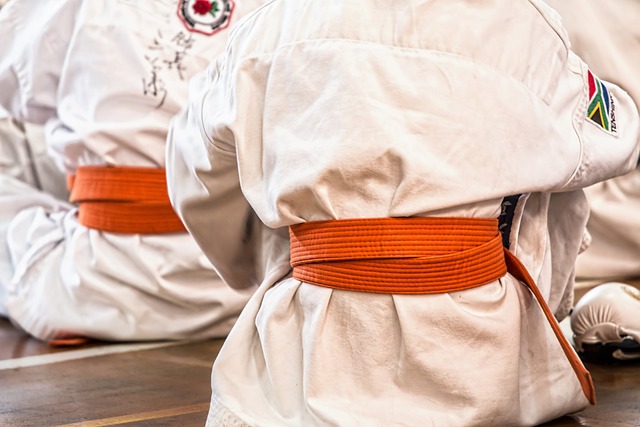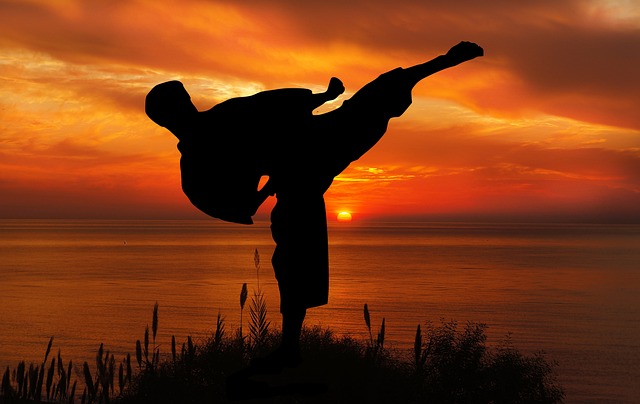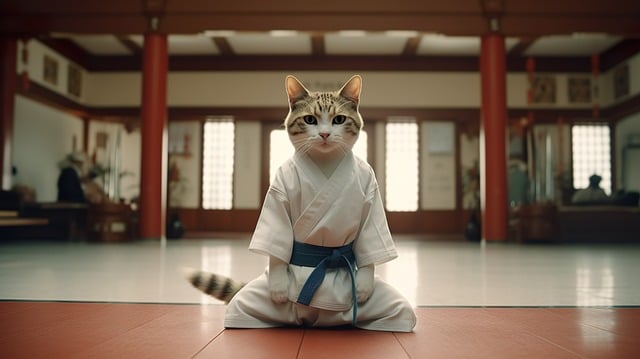The traditional keikogi, commonly known as a karate gi, is an integral part of Karate practice. It's designed for functionality, allowing practitioners to perform techniques without restriction, while its straight-legged trousers and jacket with belts maintain position during movements. The gi symbolizes the discipline, respect, and unity within the martial arts community, reflecting historical roots in Japanese tradition and adapting over centuries to incorporate functional requirements and cultural influences. Today's karate outfits are available in various styles and colors but predominantly in white, representing purity and humility. When selecting a karate gi, one must consider both the traditional aspects and modern performance needs; it should fit well for optimal movement, be durable for extended use, and align with the practitioner's rank within the martial art. The choice of color can also indicate the wearer's proficiency level. Ultimately, a karate outfit is a symbol of a practitioner's dedication to the art and their respect for its rich history.
Martial arts enthusiasts often encounter the term “karate outfit” as a cornerstone of the discipline’s practice. This article delves into the significance of martial arts attire, with a focus on the karate gi’s history and evolution across the globe. From its roots in traditional Japanese culture to modern adaptations, we explore the practical aspects of selecting the right outfit, considering fit, functionality, and respect for tradition. Understanding what a karate outfit is called and its purpose goes beyond mere attire—it’s a nod to the rich heritage and an essential aspect of martial arts training.
- Exploring the Essentials of Martial Arts Attire: The Significance of the Karate Outfit
- The Evolution and Varieties of Karate Gi: A Global Perspective
- Practical Considerations for Selecting Your Karate Outfit: Fit, Functionality, and Tradition
Exploring the Essentials of Martial Arts Attire: The Significance of the Karate Outfit

Martial arts attire serves a multifaceted role in the practice of disciplines like Karate, extending beyond mere aesthetics to encompass functionality, tradition, and respect for the art. The karate outfit, known as a ‘keikogi’ or ‘gi,’ is the standard training uniform for practitioners. This garment is designed with specific features that facilitate movement, allowing for unobstructed execution of techniques. The gi typically consists of a jacket and pants, both made of sturdy cotton fabric, and is often white in color, symbolizing purity and humility. The jacket, or ‘ue’, is fastened with belts or obi, which also serve to secure the uniform during practice. The trousers, known as ‘reshigami,’ have a straight leg and are designed to stay in place without impeding the practitioner’s range of motion. The design of the keikogi reflects the discipline and respect inherent to Karate practice, setting the foundation for the martial artist’s dedication to their craft.
In addition to its functional aspects, the karate outfit holds cultural significance as well. The gi is a representation of the uniformity and unity within the martial arts community, a testament to the shared experience among practitioners worldwide. It is also a nod to the historical influences that have shaped Karate, with roots drawing from traditional Japanese clothing adapted for practical martial arts use. As such, the keikogi is not just an article of training apparel but a symbol of respect for the tradition and history of Karate, as well as a manifestation of the wearer’s commitment to mastering the discipline. Whether in a dojo or competing in tournaments, the karate outfit remains an integral part of the martial artist’s identity and practice.
The Evolution and Varieties of Karate Gi: A Global Perspective

Martial arts uniforms, commonly known as “karate outfits” in the context of karate practice, have a rich evolutionary history that reflects both functional and cultural influences. Historically, practitioners of martial arts in Okinawa, Japan, wore garments similar to Chinese Kung Fu uniforms, which were loose-fitting garments known as “dogi.” These early attire allowed for ease of movement during practice and were made from cotton or hemp. Over time, the design of these garments was adapted and standardized by the Japanese Judo community, evolving into what is now recognized as the karate gi.
The modern karate gi typically consists of a jacket and pants, both with belts, and is constructed from heavier cotton called “cotton twill” or “Karategi.” The evolution of the gi has been influenced by the needs of the martial artist for mobility and durability, as well as the integration of Japanese aesthetics. Today, karate gi vary in color, with white being the most common, symbolizing purity and humility. They also differ in cut and weight, catering to the preferences of different karate styles and organizations worldwide. The global spread of karate has led to a diverse range of gi, each reflecting local tastes and materials while maintaining the core principles of functionality and respect for tradition.
Practical Considerations for Selecting Your Karate Outfit: Fit, Functionality, and Tradition

When selecting a karate outfit, commonly known as a gi, practitioners must consider several factors that contribute to both performance and respect for tradition. The fit of the gi is paramount; it should be neither too tight nor too loose. A well-fitting gi allows for a full range of motion, enabling the martial artist to execute techniques with precision and fluidity. This is crucial as karate demands a high level of physical activity where flexibility and ease of movement are essential for effective practice. The jacket and pants should be tailored in such a way that they do not hinder the wearer’s movements or cause unnecessary distractions during practice or competition.
Functionality is also an important aspect when choosing a karate outfit. The gi’s fabric must be durable and resistant to wear and tear, as it will undergo rigorous use. A reinforced knee design can extend the garment’s lifespan, especially for beginners who are more prone to falls and abrasions. Additionally, the color of the gi typically follows a standardized code within karate dojos: white signifies beginner rank, while black or darker hues often denote higher levels of proficiency. This tradition-based color coding respects the discipline’s hierarchical structure and serves as a visual indicator of the practitioner’s level of expertise. Whether you are a novice or an experienced karateka, your choice of gi should embody both the principles of functionality and the rich tapestry of karate’s cultural heritage.
In conclusion, martial arts uniforms, often referred to as ‘Karate Outfits’ in the context of this discipline, serve as more than mere garments; they are a testament to tradition, functionality, and personal commitment within the martial arts community. From the origins of the simple yet symbolic ‘Karate Gi’ to the contemporary variations that cater to diverse environments and practitioners, understanding the evolution and significance of these uniforms is crucial for both traditionalists and modern enthusiasts alike. Whether you are a seasoned practitioner or a curious newcomer, selecting an appropriate karate outfit called that aligns with your training needs and respects the essence of martial arts tradition can greatly enhance your practice and appreciation of this dynamic art form.
